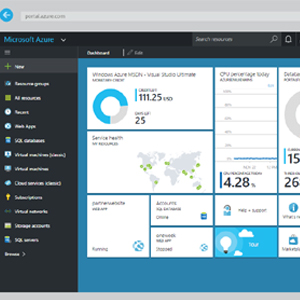 The phrase “web design strategy means a range of different things to different people, and involves more than merely “design decisions. The term seems to imply that the issue is about color, page layout and the use of Flash animations. Yes, these factors are part of the big picture, but the “bigger picture is about the overall design of your website, meaning its entire “architecture.
The phrase “web design strategy means a range of different things to different people, and involves more than merely “design decisions. The term seems to imply that the issue is about color, page layout and the use of Flash animations. Yes, these factors are part of the big picture, but the “bigger picture is about the overall design of your website, meaning its entire “architecture.
You need to find out how your site’s overall “information architecture affects its visibility to search engines. The truth is, specific web page elements like your navigation scheme and technologies like CSS (Cascading Style Scripts) or JavaScript can either interfere with or aid a search engine’s ability to “spider and rate your site. Sometimes an element can do both, at the same time!
The whole topic of a “site architecture or web design strategy that supports Search Engine Marketing (SEM) has really been quite poorly addressed. Many companies that do SEM consulting have less than state-of-the-art knowledge of how information architecture and design strategy affect a site’s usability and organic rankings. If your consultant, or your own research, is focusing only on search advertising, media buys and bidding processes, you are not getting the whole picture.
A top position in the Google results is useless if site visitors aren’t being converted into buyers. A successful site architecture and site design strategy will address the needs of both the search engines and your visitors/customers.
Directory setups
Generally speaking, the pages nearest the root directory are the most important pages of your site. Essentially, by placing them near the root you are telling the search engines your priorities, strengths, and focus.
One of the oldest and “wrongest SEO myths, however, is that search bots won’t “crawl farther down that a third subdirectory. This is not true now, if it ever was, because as long as related pages are linking with each other in a “spider-friendly way, the search engines will keep on searching. Many experts in the field recommend that the most important pages (up to 200, if you have that many) can be kept in the root directory. This means pages that are important to your target audience, not your consultant or IT expert.
Navigation is key
A key element of your site design is the navigation scheme. Sets of buttons are generally friendlier than pull-down menus (DHTML), but plain old hypertext links are even friendlier than those buttons. While it is true that these text links are easiest for programmers to format (a click with CSS), the site design must consider the preferences of the end users, not the site designers or owners.
The fact is, many usability tests and user focus groups reveal definite preferences among Internet users for intuitive buttons and those dynamic, pull-down menus. Even though some usability experts may not recommend these latter approaches, you really must consider how the users react to them, since it is their actions that lead to sales and rankings, not the theories of the tech squads.
File names, directories, URL’s
When queried on which URL is more memorable – domain.com/car/seats.html or domain.com/carseats.html – more than 90 percent of people in an online survey reported preferring the one without the subdirectory. A surplus of “forward slashes” is a common complaint heard by site designers who take the time to check in with actual users.
Many SEM experts create extra subdirectories as a means of adding another keyword in a URL, assuming that it will help ranking. It is fairly well established that keyword-rich title tags are far more beneficial than keyword-rich URL’s. Never forget for whom you are creating those URL structures. It’s the users. URLs that are easy for users to remember are also easy for them to pass on to others.
Web page categories
Some usability professionals have broken web pages down into seven specific types, while others assert that there are 11, or an even dozen, or more. The actual number is not really that important. The knowledge to take away is that there are different types of pages that SEM-oriented web strategies must consider. Which ones you will employ depends both on your type of business and your approach. And how you will conceive, design and promote each web page will depend to a great extent on the type of page that it is.
Some web page types are home page, category/gallery page, advertising (landing) page, product page, news/media page, form page, services page, shopping cart page, search/results page and “credibility page. Each one naturally requires a different approach. It would be silly to optimize your product page the very same way you optimize some other kind of page, since optimization and design strategies differ according to many factors, not the least of which are the calls to action (CTAs) for each page type.
Layout, look and feel
Naturally, layout strategies will be as varied as the different page types, and a product page will not work according to the same principles as a news page. Of course, you also have to have an integrated and consistent overall design. When you are planning for a site, you need to focus not just on the overall effect, but all the individual ones that are put into play on each page. There must be some overarching sense to the site, while still allowing for differences at the page level.
Successful site design and web strategy entails issues of language, design, color, shape, layout, look and feel. The strategy must make sense while allowing for sufficient flexibility and creativity “along the way.” Certainly you want to improve the ability of search engines to access your keyword-rich content, but the bottom line is that you want to increase those site conversions. Keep your eyes on the prize and stay vigilant.
Moonrise Productions is a custom web design company specializing in custom web development and design. Whether you need web application development or social network web design contact us and we’ll get it done right.


